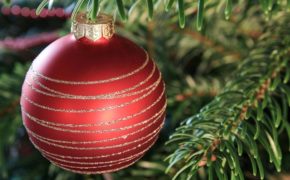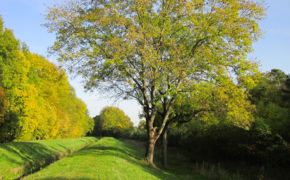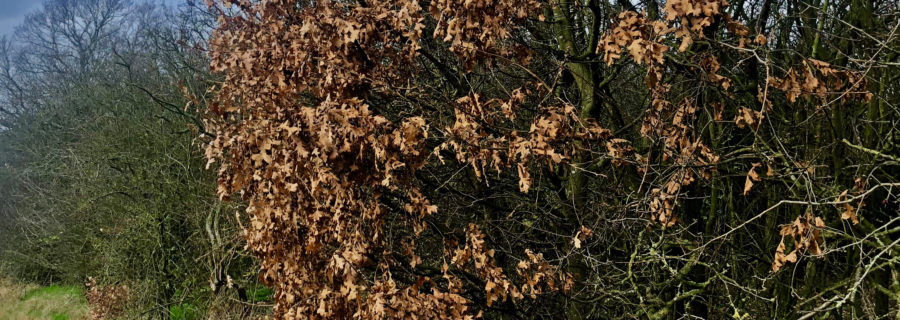
Get a quick no obligation quote It’s free and will only take a jiffy!
Why has my Deciduous Tree Still got its Leaves in Winter?
It is natural to expect any deciduous tree to shed its leaves once autumn sets in. But have you noticed your tree has retained its leaves throughout the autumn and even through the coldest months of winter? Are you concerned there is something wrong with your tree? Worry not, because this phenomenon is one that is widely known as marcescence, and it’s perfectly normal. Read on to discover what it’s all about.
Autumn sees the onset of hormonal changes in trees. Auxin is a hormone whose levels start to drop as temperatures diminish and sunlight hours fall back. The drop prompts the corky cells in the leaves to get longer, leading to fractures which cause the leaves to break away from the tree and, eventually, fall.
Marcescence is perfectly normal. Fear not!
Falling leaves is a healthy process for a tree in the colder months. Without its leaves, the tree is able to hold on to the moisture built up in the trunk and branches, so it is less likely to dry out over winter. No leaves also means a lower energy demand, great when nutrients are in short supply over the colder period of the year.
But what of those trees that defy nature and hold onto their leaves? We’re not talking evergreens here; we’re talking the likes of the oak and beech tree. If you’ve seen this in action and have been concerned that there is something wrong with your tree, there is actually no need to worry, because this is actually a naturally occurring phenomenon known as marcescence. Let’s take a look at what’s going on with these leaf-wielding trees that stay put right up to the following spring.
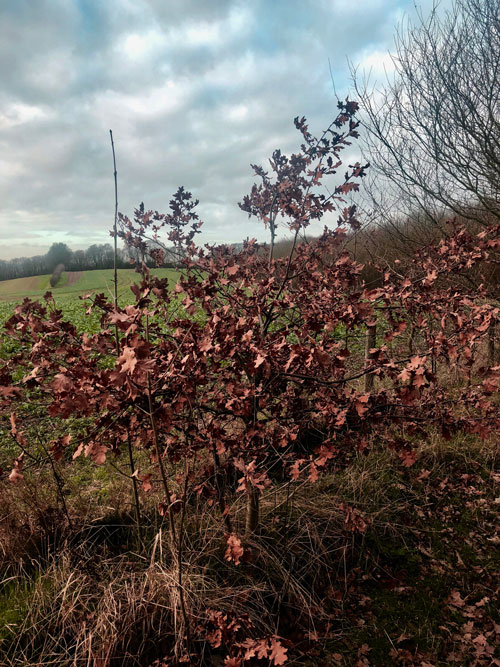
Marcescence explained
The ‘holding on’ of leaves through the winter months is known as marcescence, a term derived from the Latin marcescere which means, to fade. Trees with marcescent leaves have an incomplete corky layer. This prevents the leaves from detaching from the tree, although the connection remains a little shaky. The leaves still change colour and shrivel, yet manage to cling on for dear life, right up until the spring when they are pushed out by the new growth.
There is no scientific explanation as to why some trees retain their leaves during the winter months, although the maturity of the tree does seem to have a significant bearing.
A tree’s maturity isn’t necessarily consistent with its age. Even a large and apparently mature tree may bear branches that are immature, notably the lower ones or those growing close to the trunk. It is the immature branches that are more likely to retain their leaves during the winter.
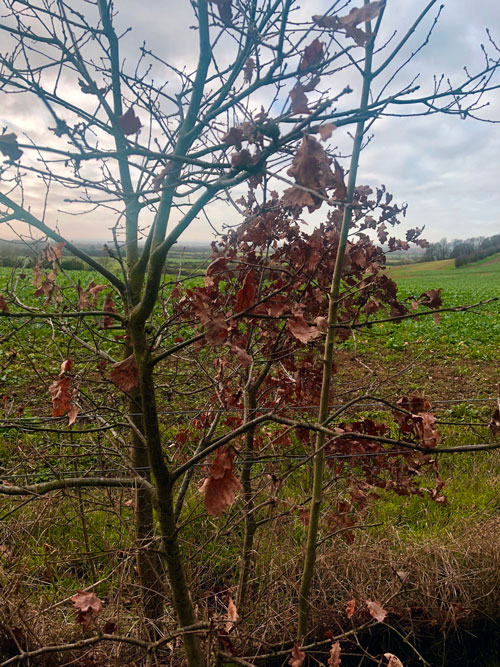
Why do trees experience marcescence?
Marcescence may be considered an evolutionary defence strategy, designed to protect a younger tree against the likes of herbivory (being eaten by animals); drying out of leaf buds, and provision of nutrients and moisture-conserving mulch when the leaves finally fall and decompose in the spring. All of this will aid a younger tree in staying strong and surviving its initial years so that it is more likely to mature.
Another explanation is that a sudden cold snap kills the leaves of the tree immediately rather than gradually, taking the colour straight from green to brown, and preventing the development of the corky abscission tissue. This can leave the brown leaves intact until the spring when the new growth pushes them out.
Whatever the reason, the fact is that marcescent leaves do not develop the abscission zone; the area at the base of the leaf petiole that contains the separation layer that prompts leaf drop. But there is nothing to worry about. If your tree is displaying signs of marcescence, it’s perfectly natural.
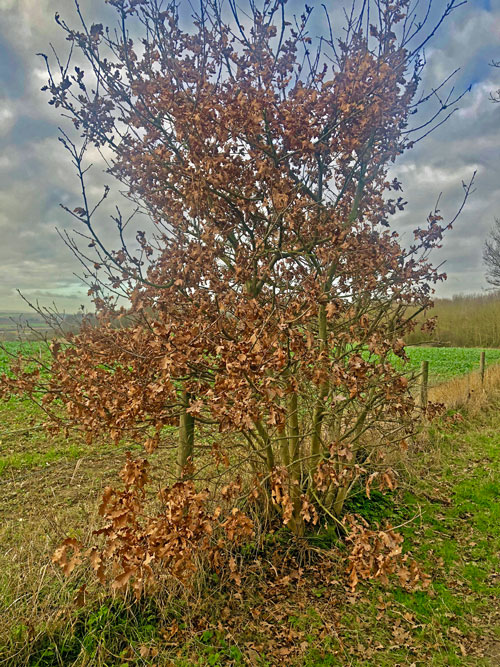
What trees are most affected by marcescence?
Woody plants are more likely to demonstrate marcescence than other species. Many oak (Quercus) species hold on to their leaves in some situations, and beech trees, particularly American beech (Fagus grandifolia), are often used as hedging to provide year-round privacy due to the fact they retain their leaves throughout the seasons. Some hornbeams (Carpinus) are also prone to keeping their leaves.
Need help with your tree?
Whether you need a tree pruned or brought back to health, we’re here to help with extensive experience and all the qualifications needed for complete reassurance. Call our friendly team on 01268 642814 and let us know how we can assist you.
Amazing service from Mark and his team. We had a problem with Bamboo that had spread from a neighbours garden. Mark kept us informed with regular phone calls and images of how the work was progressing, as we were not present the house. 1st class job and a pleasure to do business with this company.
Thank you Colin and Gillian for your kind review. It was a pleasure to be able to clear the bamboo for you.

